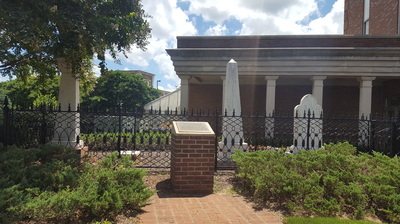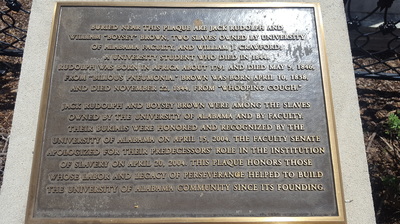If a student or faculty member got angry with the slaves, violence was an acceptable punishment. An example of this comes from Brophy’s research when he claims that one student, when no coal was brought to his room for warmth purposes, stuck a fork into the slave’s arm as a response.
Basil Manly, former South Carolina church minister turned University president from 1837 to 1855, owned 38 slaves. Two of which are the very ones buried in the small cemetery today. Thanks to his diaries and Brophy’s research we are allowed a look into the University’s antebellum past. One of Manly’s entries describes an incident of a slave named Sam not taking coal from a student’s room and getting chastised and punished in front of a small faculty audience. In one of his sermons on the “Duties of Masters and Servants”, Manly stated that slavery made slaves “happy and industrious” while making the masters “prosperous and beneficent.”
Following in Manly’s footsteps was successor Landon Garland, English professor turned University president from 1855 to 1870. In his first lecture he stated that “the negro” through slavery has been taken up from the condition of barbarity and ignorance and “made serviceable to himself and the world, and elevated and improved socially, morally, intellectually, and physically.”
Upon being brought to light from Brophy’s research the University issued a formal apology for their past and held the memorial service for the marking of the two graves, and the small cemetery was born. Along with this, they also marked three other graves near the President’s mansion and the slave quarters behind it.
Facing the past is the only way to learn and continue on. It cannot be buried and unmarked. It must continue to be discussed, remembered, and learned for the prosperity of all involved and, in this case, the University as a whole. Which is why these marked sites became a part of the University tour in 2004. Thanks to the research of one man, lives are remembered and celebrated, unearthed and cherished, and two silently sit in the shadow of the biology building, just waiting to be rediscovered.
 Destiny Sims
Destiny SimsPinson, Alabama


 RSS Feed
RSS Feed